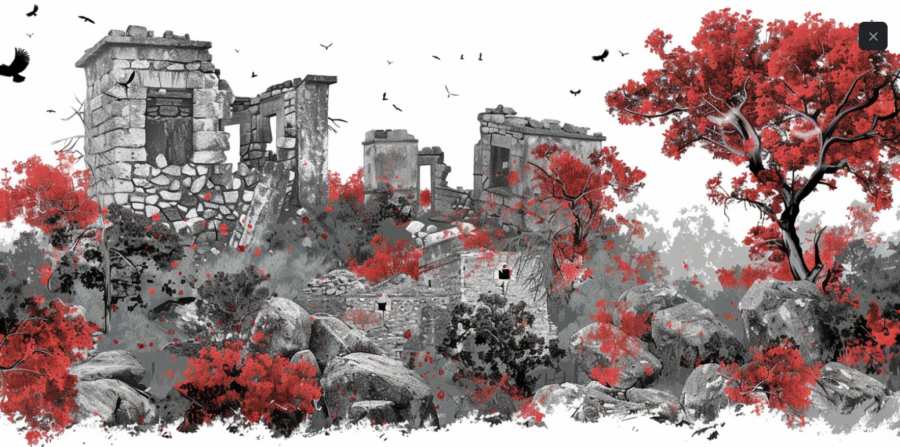Heritage Lessons Without the Lectures
You don’t need to be an archaeologist with a clipboard to understand the quiet gravity of an abandoned site. By observing the way buildings were arranged, the materials used, or how water channels were carved, you’re essentially reverse-engineering the life of a community. This is heritage conservation in its most hands-on form—no velvet ropes, no guided audio tour about where to stand.For instance, learning how stone walls have withstood decades of weather teaches sustainable building techniques that could be applied to modern eco-construction. The absence of heavy machinery in their creation speaks volumes about resourcefulness, making you wonder if our current love for concrete was a bit premature.
The Etiquette of Poking Around
Respectful exploration is not complicated, but it’s amazing how often people forget it. If you wouldn’t rummage through your neighbor’s attic without asking, you probably shouldn’t pocket that rusty horseshoe you found leaning against an old barn wall.A few ground rules help keep both you and the site intact:
- Stick to paths and avoid trampling overgrown areas—those weeds might be covering fragile structures.
- Leave everything as you found it, even the suspiciously ornate doorknob that would look great on your desk.
- Photograph freely, but don’t stage “dramatic” scenes that could damage interiors.
- If there’s a local caretaker or nearby resident, introduce yourself—chances are you’ll get a better story than any travel guide could give.
Low-Impact Travel Done Right
One unexpected benefit of ghost town tourism is its potential to ease pressure on overcrowded destinations. Rather than swarming to the same over-Instagrammed city squares, visitors can spread their footprint to less trafficked areas. These visits, when done with care, can support nearby communities through small businesses—like the lone café in the next village that still serves a surprisingly decent Turkish coffee.In some cases, local councils welcome low-impact tourism as a way to justify maintaining these sites without turning them into theme parks. That balance—keeping authenticity intact while preventing total collapse—is delicate but achievable, especially when visitors treat the place as a guest, not an owner.
Engaging With the Living Side of Ghost Towns
It’s easy to forget that abandoned villages often have a living perimeter—small farming communities nearby, seasonal shepherds passing through, or families who return once a year to tend ancestral graves. Talking to these people can transform your understanding of the site.You might learn that the eerie silence was caused not by some dramatic disaster, but by a slow trickle of youth heading to cities for jobs that didn’t involve goats. Or you might find out about a still-functioning olive press, tucked behind a locked shed, that fires up once a year to keep a tradition alive.
Sometimes, these encounters come with small surprises: a cup of tea offered in a cracked enamel mug, a hand-drawn map pointing you toward a hidden spring, or a warning about the resident goats with territorial issues.
A Treasure Hunt for Intangible Wealth
While it’s tempting to view exploration in terms of “what can I find,” the real treasures are often intangible—architecture techniques that worked without electricity, stories that anchor you to a place, or a new respect for communities that survived without Wi-Fi or imported avocados.If you’re attentive, you might notice how villages were built to catch sunlight in winter but block it in summer, or how homes shared walls to preserve heat. These are practical lessons modern architects sometimes pay consultants to rediscover. Here, they are free, if you can translate them from stone and shadow.
Packing for the Past
A little preparation goes a long way in making the most of ghost town travel. Essentials include:- Sturdy shoes—those charming cobblestones turn into ankle traps after decades of neglect.
- Water and snacks—because the village bakery closed before your grandparents were born.
- A good camera—but remember, the story matters more than the shot.
- An open mind—expect the unexpected, from wildflowers reclaiming a plaza to sudden storms rolling off the hills.
Ghosts Worth Meeting
Exploring abandoned villages isn’t just about the romance of decay; it’s about encountering the ingenuity, mistakes, and resilience of those who came before. There’s value in standing where generations once stood, even if the only company you have is a startled lizard and the faint rattle of loose shutters.These places remind us that communities are fragile but ideas can endure, etched into stone or whispered by the wind across an empty square. And if you happen to trip over a rogue goat on your way out, just consider it part of the authentic, low-impact travel experience you signed up for.
Article kindly provided by Turkish Travels
